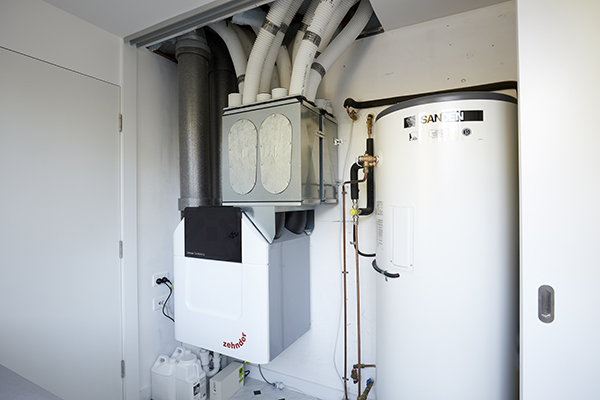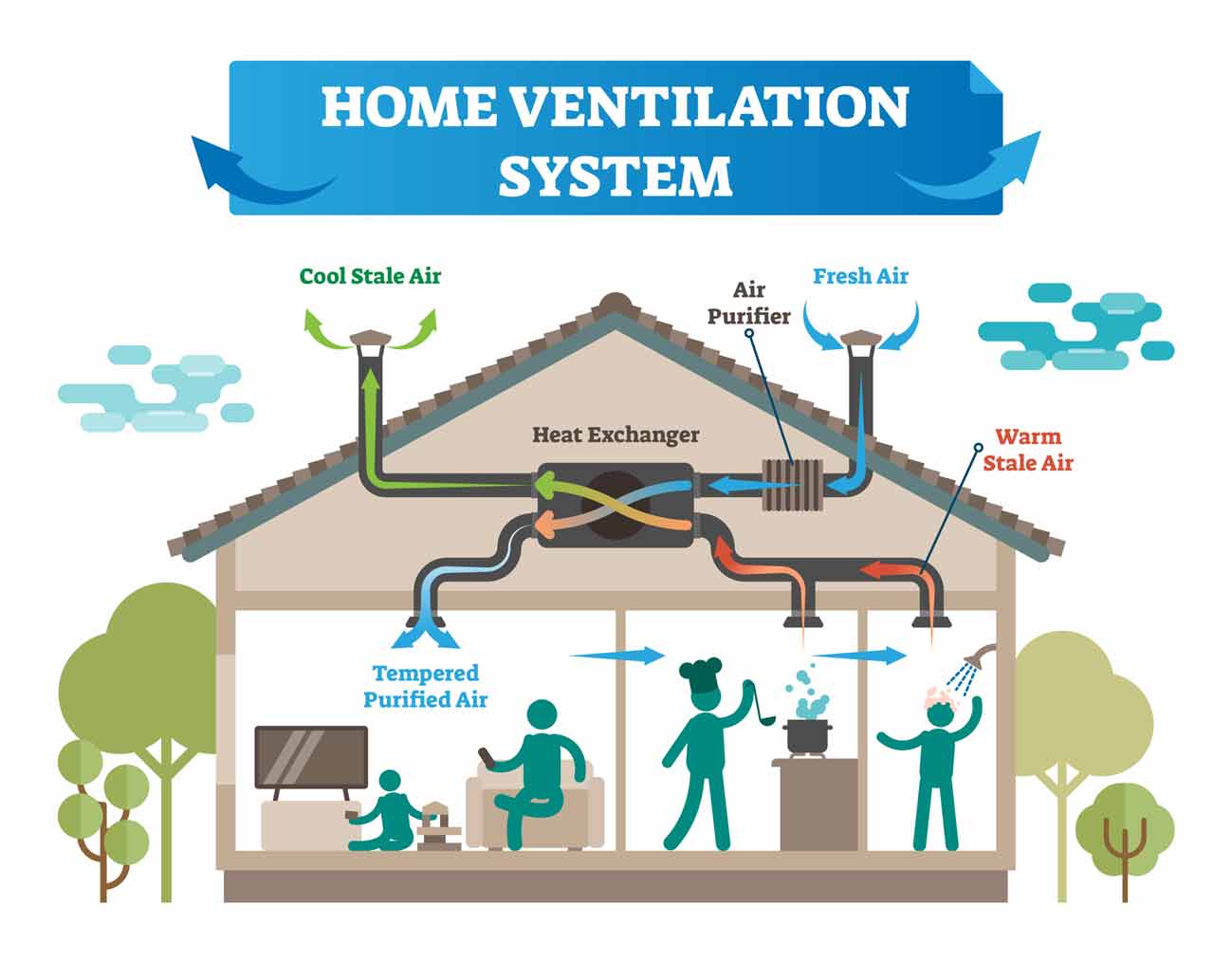How Heat Recovery Ventilation Enhances Indoor Air Top Quality and Reduces Power Expenses
Heat Recovery Ventilation (HRV) systems play a crucial function in enhancing interior air high quality while all at once reducing power expenditures. By effectively trading stale interior air with fresh outdoor air, HRVs aid maintain excellent humidity and lower contaminants. Furthermore, their ability to recoup heat from outbound air minimizes the pressure on heating and cooling systems. As power expenses remain to increase, understanding the complete potential of HRV systems comes to be progressively vital for property owners and services alike.
Comprehending Heat Recovery Ventilation Equipments

Heat recovery ventilation (HRV) systems play a vital duty in enhancing indoor air high quality, specifically in modern, energy-efficient buildings. These systems are developed to move warmth from the outgoing stagnant air to the inbound fresh air, thereby reducing energy loss while maintaining optimal temperature level degrees inside. HRVs consist of a heat exchanger, fans, and ductwork, promoting the continual blood circulation of air. By removing indoor pollutants and presenting fresh air, HRVs assist to balance humidity degrees, prevent mold and mildew development, and decrease irritants. The performance of HRV systems depends on their capability to recoup approximately 80% of the heat from the tired air, advertising energy conservation while making sure a healthy and balanced indoor atmosphere. Their assimilation is vital in achieving sustainable living methods.
The Relevance of Indoor Air Quality
Indoor air quality (IAQ) is an essential element influencing the health and wellness and well-being of residents in any type of setting. Poor IAQ can bring about numerous health problems, including respiratory system troubles, allergies, and fatigue. Additionally, it can exacerbate status quo such as asthma. Elements adding to low IAQ include pollutants from indoor sources like cleaning representatives, mold and mildew, and poor ventilation. As a result, maintaining great IAQ is vital for promoting a risk-free and comfy living or functioning space. Effective strategies to improve IAQ entail routine surveillance of air quality, proper ventilation systems, and lessening the usage of hazardous compounds indoors. By focusing on IAQ, people can ensure a much healthier environment that cultivates productivity and general quality of life.
Energy Effectiveness Perks of HRV Equipments
Numerous house owners and building managers are progressively identifying the energy efficiency advantages of warmth healing ventilation (HRV) systems. By moving warm from worn down indoor air to incoming fresh air, HRV systems considerably decrease the energy needed for heating and cooling. This process reduces reliance on conventional a/c systems, leading to lower energy bills. Additionally, HRVs aid keep a balanced indoor climate, protecting against excessive heating or cooling needs. The capacity to recover approximately 90% of the heat from outgoing air also supports sustainability initiatives by lowering total power usage. HRV systems contribute not only to set you back financial savings however likewise to a reduced carbon footprint, straightening with the growing focus on energy-efficient building techniques.
Setup and Maintenance Considerations
The reliable implementation of heat recuperation ventilation (HRV) systems calls for cautious consideration of installment and maintenance variables to ensure peak Read Full Report performance. Appropriate positioning of the HRV unit is essential, as it needs to be installed in a location that makes the most of air movement while lessening sound disruption. Furthermore, check my source ductwork must be properly sized and shielded to avoid energy loss. Routine upkeep, including filter substitute and system cleansing, is vital to safeguard optimal capability and indoor air high quality. Proprietors should establish a normal maintenance routine to determine and resolve potential problems prior to they rise. Partnership with skilled professionals throughout both installation and upkeep phases can boost the durability and performance of HRV systems, inevitably bring about much better indoor settings and decreased power costs.
Real-World Applications and Success Stories
Discovering real-world applications of warm recovery ventilation (HRV) systems reveals their considerable impact on interior air top quality and energy performance across numerous settings. In household structures, house owners have actually reported improved air top quality, causing less allergic reactions and respiratory problems. Schools carrying out HRV systems have kept in mind improved student concentration and minimized absenteeism as a result of better ventilation. Industrial structures, such as go to these guys offices and retail rooms, have experienced reduced power costs and raised worker productivity. For instance, a company office in a temperate climate attained a 30% decrease in power expenses after mounting an HRV system. These success tales show that HRV modern technology not only adds to healthier atmospheres however additionally supplies substantial financial benefits, making it a valuable investment for different fields.
Regularly Asked Questions
Can HRV Systems Reduce Allergens in Indoor Air?
The efficiency of HRV systems in decreasing interior irritants primarily pivots on their capability to filter and exchange air. HRV Heat Recovery Ventilation. By continuously changing stale air, these systems can considerably lower irritant levels throughout interior atmospheres

Exactly How Does Humidity Affect HRV System Efficiency?
Moisture substantially affects HRV system performance; high degrees can cause condensation, decreasing efficiency, while reduced humidity might improve air exchange. Balancing moisture is important for perfect procedure and preserving indoor air top quality.
Are HRV Solutions Noisy Throughout Operation?
HRV systems can produce differing noise degrees during procedure, depending on their layout and setup. Some devices operate silently, while others may create obvious sound, particularly at higher air flow settings or when inadequately preserved.
What Is the Average Life Expectancy of an HRV System?

Can HRV Solutions Be Made Use Of in All Climates?
HRV systems can be utilized in numerous environments, yet their effectiveness might vary - HRV Heat Recovery Ventilation. In severe temperatures, changes or extra systems might be essential to guarantee excellent performance and convenience while preserving interior air quality